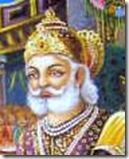Is free will an illusion? Some leading scientists think so. For instance, in 2002 the psychologist Daniel Wegner
wrote
, “It seems we are agents. It seems we cause what we do… It is sobering and ultimately accurate to call all this an illusion.” More recently, the neuroscientist Patrick Haggard
declared
, “We certainly don’t have free will. Not in the sense we think.” And in June, the neuroscientist Sam Harris
claimed
, “You seem to be an agent acting of your own free will. The problem, however, is that this point of view cannot be reconciled with what we know about the human brain.”.
Such proclamations make the news; after all, if free will is dead, then moral and legal responsibility may be close behind. As the legal analyst Jeffrey Rosen
wrote
in The New York Times Magazine, “Since all behavior is caused by our brains, wouldn’t this mean all behavior could potentially be excused? … The death of free will, or its exposure as a convenient illusion, some worry, could wreak havoc on our sense of moral and legal responsibility.”
Indeed, free will matters in part because it is a precondition for deserving blame for bad acts and deserving credit for achievements. It also turns out that simply exposing people to scientific claims that free will is an illusion can lead them to
misbehave
, for instance, cheating more or helping others less.
So, it matters whether these scientists are justified in concluding that free will is an illusion.
Here, I’ll explain why neuroscience is not the death of free will and does not “wreak havoc on our sense of moral and legal responsibility,” extending a discussion begun in Gary Gutting’s
recent Stone column
. I’ll argue that the neuroscientific evidence does not undermine free will. But first, I’ll explain the central problem: these scientists are employing a flawed notion of free will. Once a better notion of free will is in place, the argument can be turned on its head. Instead of showing that free will is an illusion, neuroscience and psychology can actually help us understand how it works.
 Leif Parsons
Leif Parsons
When Haggard concludes that we do not have free will “in the sense we think,” he reveals how this conclusion depends on a particular definition of free will. Scientists’ arguments that free will is an illusion typically begin by assuming that free will, by definition, requires an immaterial soul or non-physical mind, and they take neuroscience to provide evidence that our minds are physical. Haggard mentions free will “in the spiritual sense … a ghost in the machine.” The neuroscientist Read Montague defines free will as “the idea that we make choices and have thoughts independent of anything remotely resembling a physical process. Free will is the close cousin to the idea of the soul” (Current Biology 18, 2008).
They use a definition of free will that they take to be demanded by ordinary thinking and philosophical theory. But they are mistaken on both counts.
We should be wary of defining things out of existence. Define Earth as the planet at the center of the universe and it turns out there is no Earth. Define what’s moral as whatever your God mandates and suddenly most people become immoral. Define marriage as a union only for procreation, and you thereby annul many marriages.
The sciences of the mind do give us good reasons to think that our minds are made of matter. But to conclude that consciousness or free will is thereby an illusion is too quick. It is like inferring from discoveries in organic chemistry that life is an illusion just because living organisms are made up of non-living stuff. Much of the progress in science comes precisely from understanding wholes in terms of their parts, without this suggesting the disappearance of the wholes. There’s no reason to define the mind or free will in a way that begins by cutting off this possibility for progress.
Our brains are the most complexly organized things in the known universe, just the sort of thing that could eventually make sense of why each of us is unique, why we are conscious creatures and why humans have abilities to comprehend, converse, and create that go well beyond the precursors of these abilities in other animals. Neuroscientific discoveries over the next century will uncover how consciousness and thinking work the way they dobecause our complex brains work the way they do.
These discoveries about how our brains work can also explain how free will works rather than explaining it away. But first, we need to define free will in a more reasonable and useful way. Many philosophers, including me, understand free will as a set of capacities for imagining future courses of action, deliberating about one’s reasons for choosing them, planning one’s actions in light of this deliberation and controlling actions in the face of competing desires. We act of our own free will to the extent that we have the opportunity to exercise these capacities, without unreasonable external or internal pressure. We are responsible for our actions roughly to the extent that we possess these capacities and we have opportunities to exercise them.
These capacities for conscious deliberation, rational thinking and self-control are not magical abilities. They need not belong to immaterial souls outside the realm of scientific understanding (indeed, since we don’t know how souls are supposed to work, souls would not help to explain these capacities). Rather, these are the sorts of cognitive capacities that psychologists and neuroscientists are well positioned to study.
This conception of free will represents a longstanding and dominant view in philosophy, though it is typically ignored by scientists who conclude that free will is an illusion. It also turns out that most non-philosophers have intuitions about free and responsible action that track this conception of free will. Researchers in the new field of
experimental philosophy
study what “the folk” think about philosophical issues and why. For instance, my collaborators and I have found that most people think that free will and responsibility are compatible with
determinism, the thesis that all events are part of a law-like chain of events such that earlier events necessitate later events.
That is, most people judge that you can have free will and be responsible for your actions even if all of your decisions and actions are entirely caused by earlier events in accord with natural laws.
Our studies suggest that people sometimes misunderstand determinism to mean that we are somehow cut out of this causal chain leading to our actions. People are threatened by a possibility I call “bypassing” — the idea that our actions are caused in ways that bypass our conscious deliberations and decisions. So, if people mistakenly take causal determinism to mean that everything that happens is inevitable no matter what you think or try to do, then they conclude that we have no free will. Or if determinism is presented in a way that suggests all our decisions are just chemical reactions, they take that to mean that our conscious thinking is bypassed in such a way that we lack free will.
Even if neuroscience and psychology were in a position to establish the truth of determinism — a job better left for physics — this would not establish bypassing. As long as people understand that discoveries about how our brains work do not mean that what we think or try to do makes no difference to what happens, then their belief in free will is preserved. What matters to people is that we have the capacities for conscious deliberation and self-control that I’ve suggested we identify with free will.
But what about neuroscientific evidence that seems to suggest that these capacities
are cut out of the causal chains leading to our decisions and actions? For instance, doesn’t neuroscience show that our brains make decisions before we are conscious of them such that our conscious decisions are bypassed? With these questions, we can move past the debates about whether free will requires souls or indeterminism — debates that neuroscience does not settle — and examine actual neuroscientific evidence. Consider, for instance, research by neuroscientists suggesting that non-conscious processes in our brain cause our actions, while conscious awareness of what we are doing occurs later, too late to influence our behavior. Some interpret this research as showing that consciousness is merely an observer of the output of non-conscious mechanisms. Extending the paradigm developed by Benjamin Libet, John-Dylan Haynes and his collaborators used fMRI research to find patterns of neural activity in people’s brains that correlated with their decision to press either a right or left button up to seven seconds before they were aware of deciding which button to press. Haynes
concludes
: “How can I call a will ‘mine’ if I don’t even know when it occurred and what it has decided to do?”
However, the existing evidence does not support the conclusion that free will is an illusion. First of all, it does not show that a decision has been made before people are aware of having made it. It simply finds discernible patterns of neural activity that precede decisions. If we assume that conscious decisions have neural correlates, then we should expect to find early signs of those correlates “ramping up” to the moment of consciousness. It would be miraculous if the brain did nothing at all until the moment when people became aware of a decision to move. These experiments all involve quick, repetitive decisions, and people are told not to plan their decisions but just to wait for an urge to come upon them. The early neural activity measured in the experiments likely represents these urges or other preparations for movement that precede conscious awareness.
This is what we should expect with simple decisions. Indeed, we are lucky that conscious thinking plays little or no role in quick or habitual decisions and actions. If we had to consciously consider our every move, we’d be bumbling fools. We’d be like perpetual beginners at tennis, overthinking every stroke. We’d be unable to speak fluently, much less dance or drive. Often we initially attend consciously to what we are doing precisely to reach the point where we act without consciously attending to the component decisions and actions in our complex endeavors. When we type, tango, or talk, we don’t want conscious thinking to precede every move we make, though we do want to be aware of what we’re doing and correct any mistakes we’re making. Conscious attention is relatively slow and effortful. We must use it wisely.
We need conscious deliberation to make a difference when it matters — when we have important decisions and plans to make. The evidence from neuroscience and psychology has not shown that consciousness doesn’t matter in those sorts of decisions — in fact, some
evidence
suggests the opposite. We should not begin by assuming that free will requires a conscious self that exists beyond the brain (where?), and then conclude that
anyevidence that shows brain processes precede action thereby demonstrates that consciousness is bypassed. Rather, we should consider the role of consciousness in action on the assumption that our conscious deliberation and rational thinking are carried out by complex brain processes, and then we can examine whether those very brain processes play a causal role in action.
For example: suppose I am trying to decide whether to give $1,000 to charity or buy a new TV. I consciously consider the reasons for each choice — e.g., how it fits with my goals and values. I gather information about each option. Perhaps I struggle to overcome my more selfish motivations. I decide based on this conscious reasoning (it certainly would not help if I could magically decide on no basis at all), and I act accordingly. Now, let’s suppose each part of this process is carried out by processes in my brain. If so, then to show that consciousness is bypassed would require evidence showing that thosevery brain processes underlying my conscious reasoning are dead-ends. It would have to show that those brain processes do not connect up with the processes that lead to my typing my credit card number into the Best Buy Web site (I may then regret my selfish decision and re-evaluate my reasons for my future decisions).
None of the evidence marshaled by neuroscientists and psychologists suggests that those neural processes involved in the conscious aspects of such complex, temporally extended decision-making are in fact causal dead ends. It would be almost unbelievable if such evidence turned up. It would mean that whatever processes in the brain are involved in conscious deliberation and self-control — and the substantial energy these processes use — were as useless as our appendix, that they evolved only to observe what we do after the fact, rather than to improve our decision-making and behavior. No doubt these conscious brain processes move too slowly to be involved in each finger flex as I type, but as long as they play their part in what I do down the road — such as considering what ideas to type up — then my conscious self is not a dead end, and it is a mistake to say my free will is bypassed by what my brain does.
So, does neuroscience mean the death of free will? Well, it could if it somehow demonstrated that conscious deliberation and rational self-control did not really exist or that they worked in a sheltered corner of the brain that has no influence on our actions. But neither of these possibilities is likely. True, the mind sciences will continue to show that consciousness does not work in just the ways we thought, and they already suggest significant limitations on the extent of our rationality, self-knowledge, and self-control. Such discoveries suggest that most of us possess less free will than we tend to think, and they may inform debates about our degrees of responsibility. But they do not show that free will is an illusion.
If we put aside the misleading idea that free will depends on supernatural souls rather than our quite miraculous brains, and if we put aside the mistaken idea that our conscious thinking matters most in the milliseconds before movement, then neuroscience does not kill free will. Rather, it can help to explain our capacities to control our actions in such a way that we are responsible for them. It can help us rediscover free will.
FOOTNOTES
It’s not clear what exactly drives these
behavioral effects
of telling people free will is an illusion. Along with the two psychologists who originally discovered these effects, Kathleen Vohs and Jonathan Schooler, philosopher Thomas Nadelhoffer and I are currently following up on this research to better understand what information leads people to alter their beliefs about free will and how that then influences their behavior.
In an influential
article
, Joshua Greene and Jonathan Cohen, similarly conclude, “Free will, as we ordinarily understand it, is an illusion.” They reach this conclusion in part by assuming that people ordinarily understand free will and responsibility to require
dualism (i.e., a non-physical soul) and
libertarianism (i.e., powers to cause decisions without being caused to do so).
See
Nahmias and Murray “Experimental Philosophy on Free Will: An Error Theory for Incompatibilist Intuitions” and Nahmias, Morris, Nadelhoffer, and Turner “Is Incompatibilism Intuitive?” which, along with other x-phi work on free will, have recently been discussed in articles in
Science
and
NewScientist
.
is an associate professor at Georgia State University in the department of philosophy and the Neuroscience Institute. He is the author of many articles, including “Scientific Challenges to Free Will” and “Intuitions about Free Will, Determinism, and Bypassing.” He is the co-editor of the book, “Moral Psychology: Historical and Contemporary Readings,” and is currently writing another, titled “Rediscovering Free Will.”
Posted by
Robert Karl Stonjek
 “Never in the past was there, nor in the future will there be, a man like Janaka, who had Sita as a daughter, full of all auspiciousness.” (Janaki Mangala, Svayamvara Ki Taiyari, 7)
“Never in the past was there, nor in the future will there be, a man like Janaka, who had Sita as a daughter, full of all auspiciousness.” (Janaki Mangala, Svayamvara Ki Taiyari, 7) It should be noted that even in spiritual life, which is above the temporary pitfalls of acceptance and rejection that swing perpetually like a pendulum, there is not uniformity in desires. The materialist enjoyer is referred to as akarmi in the Vedas. This word points to fruitive work, something performed for a specific benefit. The work has reactions, which are referred to as fruits, or phala; hence the translation of karma into “fruitive work”. The reactions aren’t always intended, nor are they always expected, making karma a complicated business. The enjoyments of even the cherished results don’t last forever, requiring repeated endeavor in fruitive activity.
It should be noted that even in spiritual life, which is above the temporary pitfalls of acceptance and rejection that swing perpetually like a pendulum, there is not uniformity in desires. The materialist enjoyer is referred to as akarmi in the Vedas. This word points to fruitive work, something performed for a specific benefit. The work has reactions, which are referred to as fruits, or phala; hence the translation of karma into “fruitive work”. The reactions aren’t always intended, nor are they always expected, making karma a complicated business. The enjoyments of even the cherished results don’t last forever, requiring repeated endeavor in fruitive activity. Only the bhaktas, however, are all-inclusive. They can follow any of the activities of the karmis, jnanis andyogis and find auspiciousness through maintaining a purified consciousness. For the bhaktas, the aim is love, the transcendental variety. When dovetailed with spirituality, bhakti is known as bhakti-yoga, or
Only the bhaktas, however, are all-inclusive. They can follow any of the activities of the karmis, jnanis andyogis and find auspiciousness through maintaining a purified consciousness. For the bhaktas, the aim is love, the transcendental variety. When dovetailed with spirituality, bhakti is known as bhakti-yoga, or How can we say this with certainty? The Supreme Lord is described as having a transcendental body full of sweetness. He is the most beautiful, wise, strong, renounced, wealthy and famous. We are already attracted to famous and successful people, those who have bucked the odds and reached the tops of their respective fields. Beauty is attractive to pretty much anyone, as are strength and knowledge. In this way we see that God’s attractiveness is not a sectarian assertion or something that can only be enjoyed by people born and raised in a certain place. Rather, God is attractive to every single person, including the atheists who deny His existence. In the absence of personal interaction with the Supreme Lord and His brilliant features, what the living entity will find appealing are various impersonal aspects, separated energy expansions. Only in these areas are there varieties of auspicious conditions, dualities in what people find beneficial. This, of course, is because of the lack of the Supreme Lord’s personal presence.
How can we say this with certainty? The Supreme Lord is described as having a transcendental body full of sweetness. He is the most beautiful, wise, strong, renounced, wealthy and famous. We are already attracted to famous and successful people, those who have bucked the odds and reached the tops of their respective fields. Beauty is attractive to pretty much anyone, as are strength and knowledge. In this way we see that God’s attractiveness is not a sectarian assertion or something that can only be enjoyed by people born and raised in a certain place. Rather, God is attractive to every single person, including the atheists who deny His existence. In the absence of personal interaction with the Supreme Lord and His brilliant features, what the living entity will find appealing are various impersonal aspects, separated energy expansions. Only in these areas are there varieties of auspicious conditions, dualities in what people find beneficial. This, of course, is because of the lack of the Supreme Lord’s personal presence. Why was a king ploughing a field? Wasn’t this an act of karma? If so, how could the happiness he found be the source of pleasure for others as well? Though outwardly engaged in fruitive work, this leader of men was actually doing his occupational duty, remaining unattached to the result. He was a fruitive worker who had burned up the reactions to his work by being fully in knowledge. In one sense, this wonderful king of ancient times could be thought of as a combination jnani/yogi. He had knowledge of dharma, or religiosity, which then guided his behavior. He also had control over his senses, which earned him the title Videha, which means “one who is bodiless”.
Why was a king ploughing a field? Wasn’t this an act of karma? If so, how could the happiness he found be the source of pleasure for others as well? Though outwardly engaged in fruitive work, this leader of men was actually doing his occupational duty, remaining unattached to the result. He was a fruitive worker who had burned up the reactions to his work by being fully in knowledge. In one sense, this wonderful king of ancient times could be thought of as a combination jnani/yogi. He had knowledge of dharma, or religiosity, which then guided his behavior. He also had control over his senses, which earned him the title Videha, which means “one who is bodiless”. The girl Janaka found was the Supreme Lord’s wife in the spiritual sky. Since God is the source of all men, He is given the name Narayana. Since He is the most fortunate entity in the world, His wife is known as Lakshmi, who is the goddess of fortune. That same Lakshmi appeared in Janaka’s sacred land to bless him, to give him full auspiciousness. Janaka was the most pious king and thus fully deserved having Lakshmi’s presence.
The girl Janaka found was the Supreme Lord’s wife in the spiritual sky. Since God is the source of all men, He is given the name Narayana. Since He is the most fortunate entity in the world, His wife is known as Lakshmi, who is the goddess of fortune. That same Lakshmi appeared in Janaka’s sacred land to bless him, to give him full auspiciousness. Janaka was the most pious king and thus fully deserved having Lakshmi’s presence. On the other hand, someone like Janaka was so pious that he was desirous to love God and His devotees without hesitation. What better way to allow for that love to continue than by giving him Sita as a daughter? The Supreme Lord knows all. He watches the behavior of the pious and sees whether or not they are qualified for receiving full auspiciousness. In addition to raising Sita as his most precious daughter, on the day of her marriage Janaka would receive Narayana Himself, in the guise of a warrior prince named Rama, as a son-in-law.
On the other hand, someone like Janaka was so pious that he was desirous to love God and His devotees without hesitation. What better way to allow for that love to continue than by giving him Sita as a daughter? The Supreme Lord knows all. He watches the behavior of the pious and sees whether or not they are qualified for receiving full auspiciousness. In addition to raising Sita as his most precious daughter, on the day of her marriage Janaka would receive Narayana Himself, in the guise of a warrior prince named Rama, as a son-in-law.